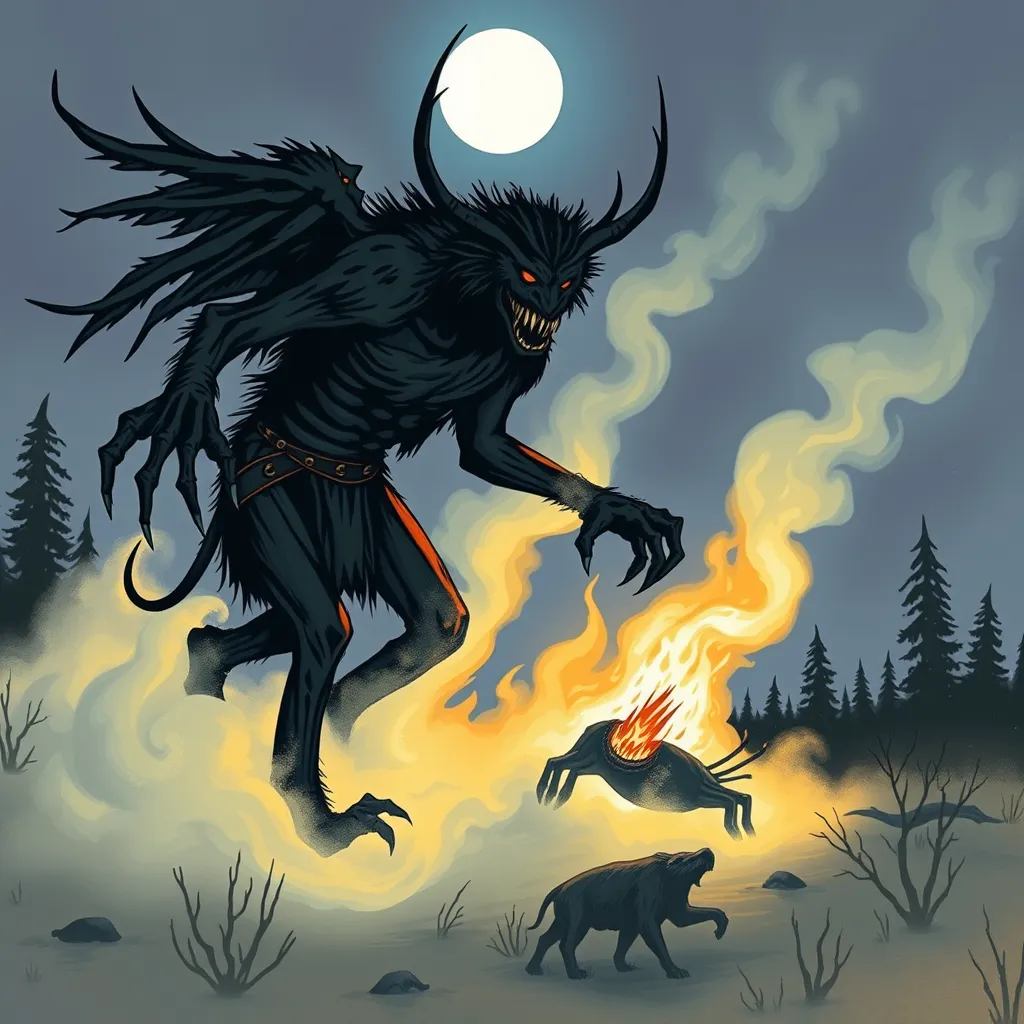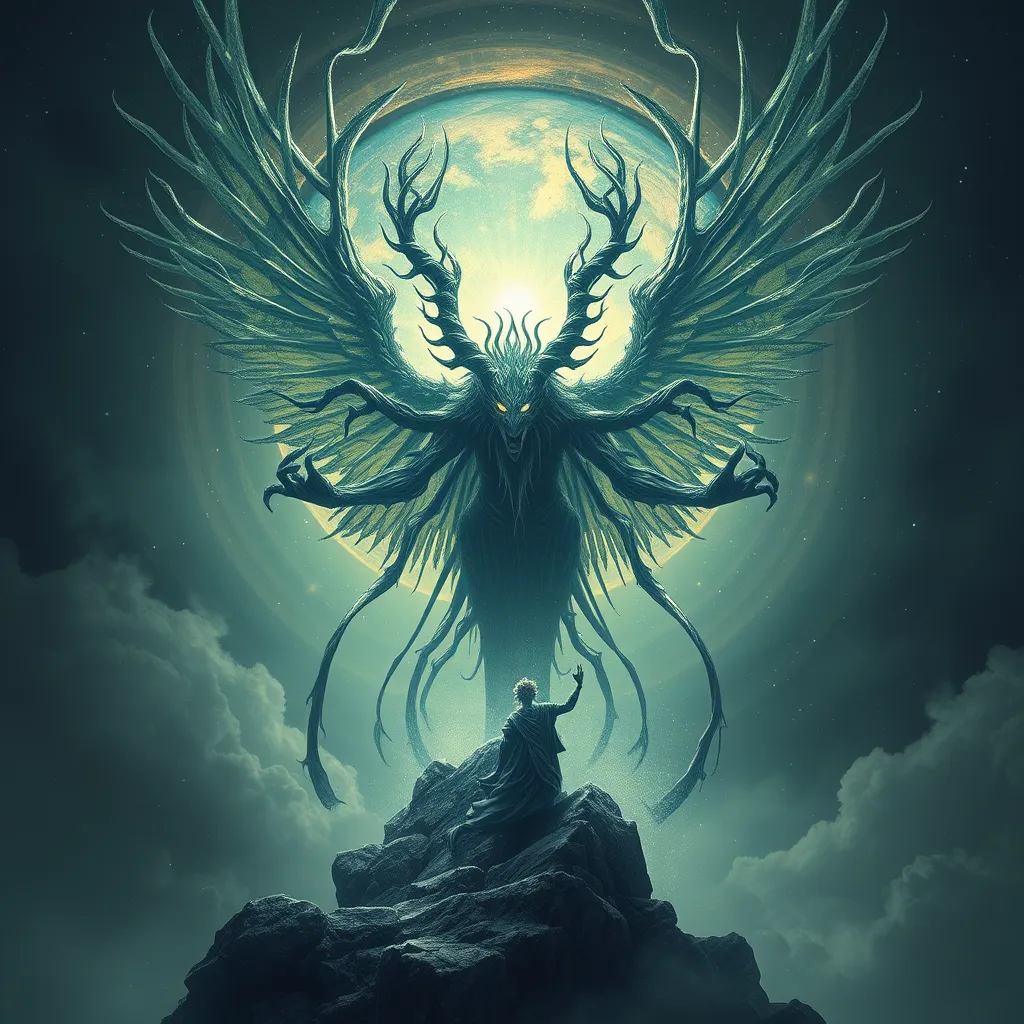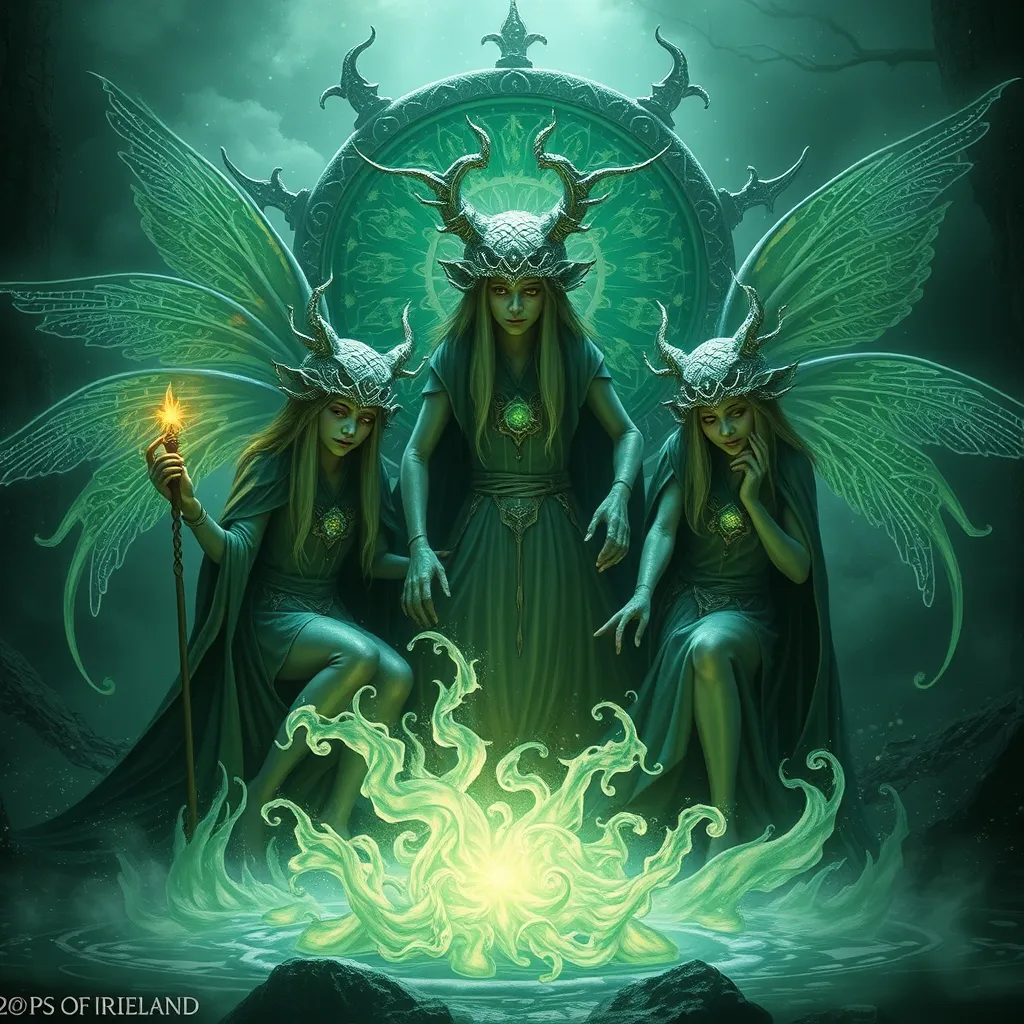The Wendigo in Ojibwe Tradition: Stories of Warning and Survival
I. Introduction
The Wendigo is a legendary creature originating from the folklore of the Algonquian-speaking peoples, particularly within the Ojibwe tradition. It embodies the very essence of winter’s harshness and the darker sides of human nature, often serving as a cautionary figure to warn against the dangers of greed and selfishness.
In Ojibwe culture, the Wendigo is not just a monster; it represents a profound moral lesson and a symbol of survival in the face of adversity. This article will explore the historical context, characteristics, cultural significance, and modern interpretations of the Wendigo, emphasizing its role as a warning and a narrative of survival.
II. Historical Context of the Wendigo Legend
The origins of the Wendigo myth can be traced back to the indigenous traditions of North America, particularly among the Algonquian tribes. The Wendigo is often described as a malevolent spirit associated with winter, starvation, and the transformation of humans into monstrous beings.
In pre-colonial times, the Wendigo was seen as a warning against the desperation that could lead individuals to resort to cannibalism in times of famine. As colonialism took hold, the Wendigo myth evolved, reflecting the cultural disruptions and traumas faced by indigenous peoples.
Over time, the Wendigo legend has adapted to changing circumstances, retaining its core themes while integrating new elements that resonate with contemporary issues faced by Ojibwe communities.
III. Characteristics and Symbolism of the Wendigo
Physically, the Wendigo is often depicted as a gaunt, skeletal figure, emaciated from starvation yet possessing immense strength. It is said to have glowing eyes, long claws, and a mouth filled with sharp teeth, embodying the terror of both the winter wilderness and the consequences of unchecked greed.
The symbolism of the Wendigo extends beyond its terrifying appearance. Key themes include:
- Greed: The Wendigo represents the insatiable desire for more, leading individuals to abandon their morals.
- Cannibalism: It serves as a stark warning against the loss of humanity in the face of desperation.
- Winter and Survival: The Wendigo is a manifestation of the brutal challenges posed by winter, symbolizing the struggle for survival.
IV. Wendigo Stories: Oral Traditions and Cultural Significance
Wendigo stories are integral to Ojibwe oral traditions, passed down through generations to teach important lessons. These narratives often revolve around encounters with the Wendigo, illustrating the consequences of straying from communal values.
Key stories include:
- A tale of a man who, driven by hunger, succumbs to the Wendigo’s allure, ultimately losing his humanity.
- A narrative highlighting the importance of community and sharing, showcasing how isolation can lead to a Wendigo transformation.
Storytelling plays a crucial role in preserving Ojibwe culture, serving as a means of imparting wisdom, morals, and the collective identity of the community.
V. The Wendigo as a Cautionary Figure
The Wendigo serves as a potent warning against negative behaviors that can lead to personal and communal destruction. Its myth emphasizes the following themes:
- Greed: The insatiable desire for more can lead to one’s downfall, reflecting the Wendigo’s gluttony.
- Selfishness: The individualistic mindset can isolate one from the community, making them vulnerable to the Wendigo’s influence.
- Consequences of Isolation: The stories illustrate how isolation can transform individuals into Wendigos, both literally and metaphorically.
These cautionary tales resonate within Ojibwe communities, reminding individuals of the importance of community and mutual support.
VI. Modern Interpretations and Representations of the Wendigo
In contemporary literature and media, the Wendigo has been reimagined in various forms, from horror films to novels. These interpretations often emphasize its monstrous qualities while sometimes losing sight of its cultural significance. However, many creators strive to balance tradition with modern narratives, ensuring that the essence of the Wendigo is preserved.
Popular culture has adopted the Wendigo as a symbol of fear and horror, but it is essential to recognize the deeper meanings embedded in its folklore. Writers and filmmakers are increasingly acknowledging the importance of respecting Indigenous narratives and the wisdom they impart.
VII. Survival Lessons from Wendigo Stories
Wendigo stories offer vital survival lessons that extend beyond the realm of folklore. They teach strategies for enduring harsh environments and emphasize the importance of community and cooperation. Key survival lessons include:
- Resource Sharing: One of the most significant lessons is the need to share resources during difficult times.
- Community Resilience: Strength lies in unity; working together can help overcome the challenges posed by nature.
- Adaptation: Ojibwe culture emphasizes resilience and adaptation, essential traits for survival in changing environments.
VIII. Conclusion
The Wendigo holds a significant place in Ojibwe tradition, serving as both a cautionary figure and a symbol of survival. Its stories impart essential lessons about the dangers of greed, the importance of community, and the need for resilience in the face of adversity.
As we reflect on the relevance of the Wendigo myth today, it is crucial to respect and preserve Indigenous narratives and teachings. These stories not only enrich our understanding of human nature but also provide timeless wisdom that can guide us in our own lives.



